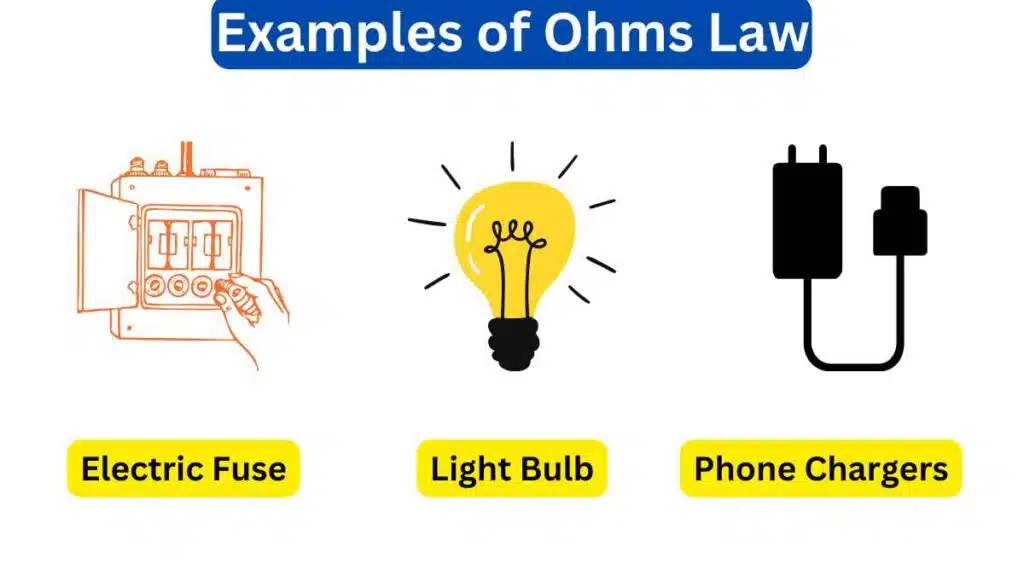10 Examples of Ohm’s law
Ohm’s law states that the current through a conductor is directly proportional to the voltage across the conductor and inversely proportional to the resistance of the conductor.
Ohm’s Law governs current, voltage, and resistance in devices like phone chargers, circuits, electronics, wires, and insulators. It determines electrical power, safety limits, and battery life.
Examples of Ohms law
Ohm’s Law describes the relationship between voltage, current, and resistance in electrical circuits. Here are 10 real-world examples of Ohm’s Law.

1. Phone Chargers
A very common example of Ohm’s law is a phone charger. The voltage and resistance are fixed in a phone charger, determining the amount of current that can flow to charge your phone battery according to Ohm’s Law.
2. Circuit Breakers
Circuit breakers use Ohm’s Law to calculate overcurrent conditions from voltage and resistance specs and trip the breaker when unsafe currents occur.
3. Electrical Power
The power dissipated in a resistor is calculated using current and resistance variables from Ohm’s Law: P=I2R. More current and resistance means more power.
4. Electronics
Engineers use Ohm’s Law to determine the right resistance values for resistors in electronic devices to achieve proper voltages and currents.
5. Electric Shock Hazards
Higher currents from Ohm’s Law pose greater electric shock risks. Using lower voltages in wet areas reduces current flow through the body’s resistance.
6. Lightbulb Brightness
A very common device that we observe in our daily lives is a lightbulb. A lightbulb’s brightness depends on its resistance. Lower resistance bulbs draw more current for greater brightness based on Ohm’s Law.
7. Battery Life
Batteries with lower internal resistance allow more current flow and usage. High internal resistance drains batteries faster per Ohm’s Law.
8. Wire Gauges
We can determine the wire gauge with the help of Ohm law. Thicker wires have less resistance, allowing higher currents without overheating according to Ohm’s Law limits.
9. Electric Fuses
An electric fuse is a very common example of ohm law. Fuses contain specific resistances designed to melt and break circuits when current exceeds desired levels as determined by Ohm’s Law.
10. Insulators
Insulators limit current flow because they have extremely high resistance values. No conduction occurs according to V=IR.
Ohm’s Law gives us the tools to engineer safer, more efficient electrical systems and components.







Leave a Reply